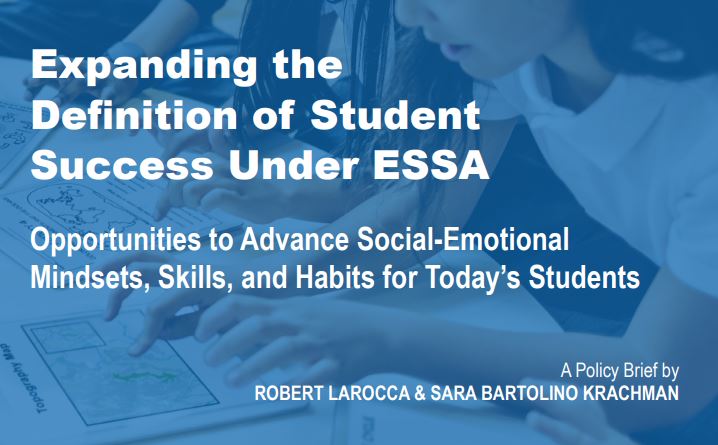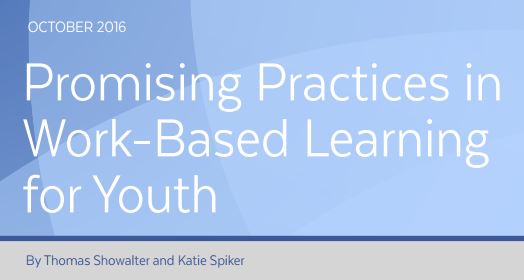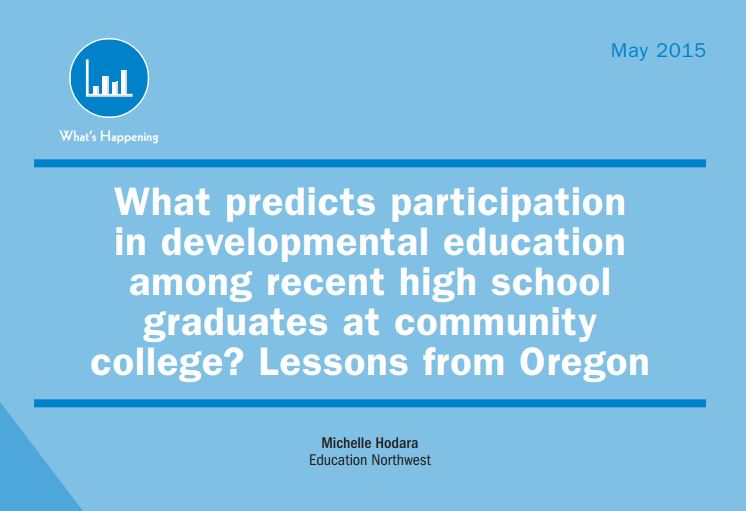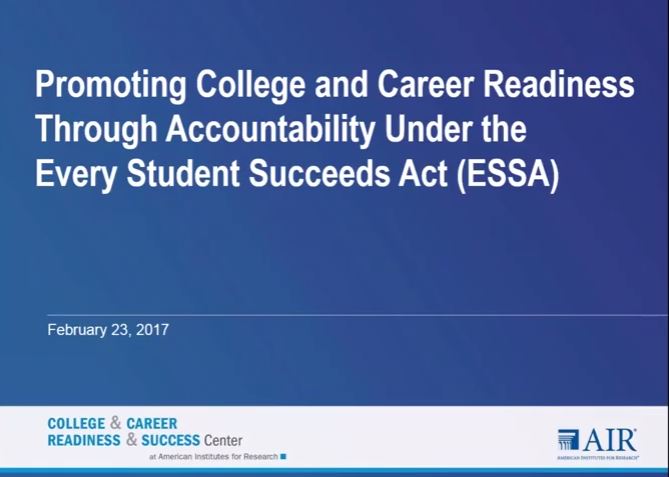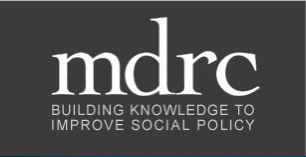- Resources by Audience
- State Leaders
- District Leaders
- School Leaders
- Teachers
- Business Leaders
- Higher Education
- Non Profits
- Non Profits
FOUNDATIONS FOR HELPING STUDENTS SUCCEED
Transition from a Grad-Focused EWS. Many states have adopted some form of early warning system to improve high school graduation rates. This How-to section provides guidance on shifting the focus of student supports to preparation for success in college or a career.
Determine Current Postsecondary Outcomes. To articulate goals and set priorities, it’s important to assess current outcomes for students overall and by demographic subgroups. This How-to offers suggestions for using data to begin that process.
Bring an Equity Lens. This How-to helps leaders identify and address disparities in student opportunities and outcomes based on such factors as socio-economic status, race, ethnicity, gender, and special needs.
Start Something Viable. To gain stakeholder support and build momentum, it helps to set achievable goals that will lead to early wins. This How-to identifies issues to consider in making those decisions.
Data Systems. Recommendations developed by the PAS workgroup on building data systems to support EWS for postsecondary success.
Ensuring a Data Sytem is Useful and Usable. Data systems to support student success must be accurate, flexible, constantly up to date, and easy to use. This How-to provides links to valuable tools and resources to help ensure that your system meets these criteria.
Standards for Predictive Indicators. PAS workgroup-generated guidance on identifying valid Indicators that are predictive of students’ likelihood of achieving success after graduation, and on which educators can have a meaningful impact.
Massachusetts DESE. This PAS in Action Snapshot describes one state’s journey to develop and promote a robust statewide indicator system that empowers educators to support all students on the pathway to adult success.
STUDENT SUPPORT SYSTEMS
Develop Life and Social Skills. Helping students gain the social and life skills they need to interact with others, set goals, and overcome adversity can play a key role in preparing them for adult success. This How-to page offers not only guidance, but real-life examples of school systems meeting this challenge.
Berea Partners for Education. This PAS in Action Snapshot profiles a regional organization with a long history of raising rural students’ aspirations and nurturing in them the skills they need to succeed.
USING DATA TO SUPPORT STUDENTS
Data Systems. Recommendations developed by the PAS workgroup on building data systems to support EWS for postsecondary success.
Ensuring a Data Sytem is Useful and Usable. Data systems to support student success must be accurate, flexible, constantly up to date, and easy to use. This How-to provides links to valuable tools and resources to help ensure that your system meets these criteria.
Standards for Predictive Indicators. PAS workgroup-generated guidance on identifying valid Indicators that are predictive of students’ likelihood of achieving success after graduation, and on which educators can have a meaningful impact.
Massachusetts DESE. This PAS in Action Snapshot describes one state’s journey to develop and promote a robust statewide indicator system that empowers educators to support all students on the pathway to adult success.
DEVELOPING A STATEWIDE CAREER PROGRAM
Career Pathways. One strategy to help students attain postsecondary success and strengthen their communities of origin is to develop a robust statewide Career and Technical Education program. This How-to offers links to information on some of the ways that states have achieved this goal.
Advance CTE is a nonprofit organization supporting improvements in career technical education (CTE) pathways at the state level. This PAS in Action Snapshot showcases its New Skills for Youth initiative with ten vanguard states to identify and promote best practices in providing high quality career pathways.
Evansville-Vanderburgh. This PAS in Action Snapshot describes how Indiana’s third largest school district worked with local businesses, using a statewide career readiness framework to provide students viable career pathways beyond the traditional four-year college trajectory.
FOUNDATIONS FOR HELPING STUDENTS SUCCEED
Transition from a Grad-Focused EWS. Many states have adopted some form of early warning system to improve high school graduation rates. This How-to section provides guidance on shifting the focus of student supports to preparation for success in college or a career.
Determine Current Postsecondary Outcomes. To articulate goals and set priorities, it’s important to assess current outcomes for students overall and by demographic subgroups. This How-to offers suggestions for using data to begin that process.
Bring an Equity Lens. This How-to helps leaders identify and address disparities in student opportunities and outcomes based on such factors as socio-economic status, race, ethnicity, gender, and special needs.
Start Something Viable. To gain stakeholder support and build momentum, it helps to set achievable goals that will lead to early wins. This How-to identifies issues to consider in making those decisions.
Data Systems. Recommendations developed by the PAS workgroup on building data systems to support EWS for postsecondary success.
Ensuring a Data Sytem is Useful and Usable. Data systems to support student success must be accurate, flexible, constantly up to date, and easy to use. This How-to provides links to valuable tools and resources to help ensure that your system meets these criteria.
Standards for Predictive Indicators. PAS workgroup-generated guidance on identifying valid Indicators that are predictive of students’ likelihood of achieving success after graduation, and on which educators can have a meaningful impact.
Massachusetts DESE. This PAS in Action Snapshot describes one state’s journey to develop and promote a robust statewide indicator system that empowers educators to support all students on the pathway to adult success.
STUDENT SUPPORT SYSTEMS
Develop Life and Social Skills. Helping students gain the social and life skills they need to interact with others, set goals, and overcome adversity can play a key role in preparing them for adult success. This How-to page offers not only guidance, but real-life examples of school systems meeting this challenge.
Berea Partners for Education. This PAS in Action Snapshot profiles a regional organization with a long history of raising rural students’ aspirations and nurturing in them the skills they need to succeed.
FOUNDATIONS FOR HELPING STUDENTS SUCCEED
Transition from a Grad-Focused EWS. Many states have adopted some form of early warning system to improve high school graduation rates. This How-to section provides guidance on shifting the focus of student supports to preparation for success in college or a career.
Determine Current Postsecondary Outcomes. To articulate goals and set priorities, it’s important to assess current outcomes for students overall and by demographic subgroups. This How-to offers suggestions for using data to begin that process.
Bring an Equity Lens. This How-to helps leaders identify and address disparities in student opportunities and outcomes based on such factors as socio-economic status, race, ethnicity, gender, and special needs.
Start Something Viable. To gain stakeholder support and build momentum, it helps to set achievable goals that will lead to early wins. This How-to identifies issues to consider in making those decisions.
Data Systems. Recommendations developed by the PAS workgroup on building data systems to support EWS for postsecondary success.
Ensuring a Data Sytem is Useful and Usable. Data systems to support student success must be accurate, flexible, constantly up to date, and easy to use. This How-to provides links to valuable tools and resources to help ensure that your system meets these criteria.
Standards for Predictive Indicators. PAS workgroup-generated guidance on identifying valid Indicators that are predictive of students’ likelihood of achieving success after graduation, and on which educators can have a meaningful impact.
Massachusetts DESE. This PAS in Action Snapshot describes one state’s journey to develop and promote a robust statewide indicator system that empowers educators to support all students on the pathway to adult success.
STUDENT SUPPORT SYSTEMS
Develop Life and Social Skills. Helping students gain the social and life skills they need to interact with others, set goals, and overcome adversity can play a key role in preparing them for adult success. This How-to page offers not only guidance, but real-life examples of school systems meeting this challenge.
Berea Partners for Education. This PAS in Action Snapshot profiles a regional organization with a long history of raising rural students’ aspirations and nurturing in them the skills they need to succeed.
FOUNDATIONS FOR HELPING STUDENTS SUCCEED
Transition from a Grad-Focused EWS. Many states have adopted some form of early warning system to improve high school graduation rates. This How-to section provides guidance on shifting the focus of student supports to preparation for success in college or a career.
Determine Current Postsecondary Outcomes. To articulate goals and set priorities, it’s important to assess current outcomes for students overall and by demographic subgroups. This How-to offers suggestions for using data to begin that process.
Bring an Equity Lens. This How-to helps leaders identify and address disparities in student opportunities and outcomes based on such factors as socio-economic status, race, ethnicity, gender, and special needs.
Start Something Viable. To gain stakeholder support and build momentum, it helps to set achievable goals that will lead to early wins. This How-to identifies issues to consider in making those decisions.
Data Systems. Recommendations developed by the PAS workgroup on building data systems to support EWS for postsecondary success.
Ensuring a Data Sytem is Useful and Usable. Data systems to support student success must be accurate, flexible, constantly up to date, and easy to use. This How-to provides links to valuable tools and resources to help ensure that your system meets these criteria.
Standards for Predictive Indicators. PAS workgroup-generated guidance on identifying valid Indicators that are predictive of students’ likelihood of achieving success after graduation, and on which educators can have a meaningful impact.
Massachusetts DESE. This PAS in Action Snapshot describes one state’s journey to develop and promote a robust statewide indicator system that empowers educators to support all students on the pathway to adult success.
STUDENT SUPPORT SYSTEMS
Develop Life and Social Skills. Helping students gain the social and life skills they need to interact with others, set goals, and overcome adversity can play a key role in preparing them for adult success. This How-to page offers not only guidance, but real-life examples of school systems meeting this challenge.
Berea Partners for Education. This PAS in Action Snapshot profiles a regional organization with a long history of raising rural students’ aspirations and nurturing in them the skills they need to succeed.
FOUNDATIONS FOR HELPING STUDENTS SUCCEED
Transition from a Grad-Focused EWS. Many states have adopted some form of early warning system to improve high school graduation rates. This How-to section provides guidance on shifting the focus of student supports to preparation for success in college or a career.
Determine Current Postsecondary Outcomes. To articulate goals and set priorities, it’s important to assess current outcomes for students overall and by demographic subgroups. This How-to offers suggestions for using data to begin that process.
Bring an Equity Lens. This How-to helps leaders identify and address disparities in student opportunities and outcomes based on such factors as socio-economic status, race, ethnicity, gender, and special needs.
Start Something Viable. To gain stakeholder support and build momentum, it helps to set achievable goals that will lead to early wins. This How-to identifies issues to consider in making those decisions.
Data Systems. Recommendations developed by the PAS workgroup on building data systems to support EWS for postsecondary success.
Ensuring a Data Sytem is Useful and Usable. Data systems to support student success must be accurate, flexible, constantly up to date, and easy to use. This How-to provides links to valuable tools and resources to help ensure that your system meets these criteria.
Standards for Predictive Indicators. PAS workgroup-generated guidance on identifying valid Indicators that are predictive of students’ likelihood of achieving success after graduation, and on which educators can have a meaningful impact.
Massachusetts DESE. This PAS in Action Snapshot describes one state’s journey to develop and promote a robust statewide indicator system that empowers educators to support all students on the pathway to adult success.
STUDENT SUPPORT SYSTEMS
Develop Life and Social Skills. Helping students gain the social and life skills they need to interact with others, set goals, and overcome adversity can play a key role in preparing them for adult success. This How-to page offers not only guidance, but real-life examples of school systems meeting this challenge.
Berea Partners for Education. This PAS in Action Snapshot profiles a regional organization with a long history of raising rural students’ aspirations and nurturing in them the skills they need to succeed.
FOUNDATIONS FOR HELPING STUDENTS SUCCEED
Transition from a Grad-Focused EWS. Many states have adopted some form of early warning system to improve high school graduation rates. This How-to section provides guidance on shifting the focus of student supports to preparation for success in college or a career.
Determine Current Postsecondary Outcomes. To articulate goals and set priorities, it’s important to assess current outcomes for students overall and by demographic subgroups. This How-to offers suggestions for using data to begin that process.
Bring an Equity Lens. This How-to helps leaders identify and address disparities in student opportunities and outcomes based on such factors as socio-economic status, race, ethnicity, gender, and special needs.
Start Something Viable. To gain stakeholder support and build momentum, it helps to set achievable goals that will lead to early wins. This How-to identifies issues to consider in making those decisions.
Data Systems. Recommendations developed by the PAS workgroup on building data systems to support EWS for postsecondary success.
Ensuring a Data Sytem is Useful and Usable. Data systems to support student success must be accurate, flexible, constantly up to date, and easy to use. This How-to provides links to valuable tools and resources to help ensure that your system meets these criteria.
Standards for Predictive Indicators. PAS workgroup-generated guidance on identifying valid Indicators that are predictive of students’ likelihood of achieving success after graduation, and on which educators can have a meaningful impact.
Massachusetts DESE. This PAS in Action Snapshot describes one state’s journey to develop and promote a robust statewide indicator system that empowers educators to support all students on the pathway to adult success.
STUDENT SUPPORT SYSTEMS
Develop Life and Social Skills. Helping students gain the social and life skills they need to interact with others, set goals, and overcome adversity can play a key role in preparing them for adult success. This How-to page offers not only guidance, but real-life examples of school systems meeting this challenge.
Berea Partners for Education. This PAS in Action Snapshot profiles a regional organization with a long history of raising rural students’ aspirations and nurturing in them the skills they need to succeed.
FOUNDATIONS FOR HELPING STUDENTS SUCCEED
Transition from a Grad-Focused EWS. Many states have adopted some form of early warning system to improve high school graduation rates. This How-to section provides guidance on shifting the focus of student supports to preparation for success in college or a career.
Determine Current Postsecondary Outcomes. To articulate goals and set priorities, it’s important to assess current outcomes for students overall and by demographic subgroups. This How-to offers suggestions for using data to begin that process.
Bring an Equity Lens. This How-to helps leaders identify and address disparities in student opportunities and outcomes based on such factors as socio-economic status, race, ethnicity, gender, and special needs.
Start Something Viable. To gain stakeholder support and build momentum, it helps to set achievable goals that will lead to early wins. This How-to identifies issues to consider in making those decisions.
Data Systems. Recommendations developed by the PAS workgroup on building data systems to support EWS for postsecondary success.
Ensuring a Data Sytem is Useful and Usable. Data systems to support student success must be accurate, flexible, constantly up to date, and easy to use. This How-to provides links to valuable tools and resources to help ensure that your system meets these criteria.
Standards for Predictive Indicators. PAS workgroup-generated guidance on identifying valid Indicators that are predictive of students’ likelihood of achieving success after graduation, and on which educators can have a meaningful impact.
Massachusetts DESE. This PAS in Action Snapshot describes one state’s journey to develop and promote a robust statewide indicator system that empowers educators to support all students on the pathway to adult success.
STUDENT SUPPORT SYSTEMS
Develop Life and Social Skills. Helping students gain the social and life skills they need to interact with others, set goals, and overcome adversity can play a key role in preparing them for adult success. This How-to page offers not only guidance, but real-life examples of school systems meeting this challenge.
Berea Partners for Education. This PAS in Action Snapshot profiles a regional organization with a long history of raising rural students’ aspirations and nurturing in them the skills they need to succeed.
FOUNDATIONS FOR HELPING STUDENTS SUCCEED
Transition from a Grad-Focused EWS. Many states have adopted some form of early warning system to improve high school graduation rates. This How-to section provides guidance on shifting the focus of student supports to preparation for success in college or a career.
Determine Current Postsecondary Outcomes. To articulate goals and set priorities, it’s important to assess current outcomes for students overall and by demographic subgroups. This How-to offers suggestions for using data to begin that process.
Bring an Equity Lens. This How-to helps leaders identify and address disparities in student opportunities and outcomes based on such factors as socio-economic status, race, ethnicity, gender, and special needs.
Start Something Viable. To gain stakeholder support and build momentum, it helps to set achievable goals that will lead to early wins. This How-to identifies issues to consider in making those decisions.
Data Systems. Recommendations developed by the PAS workgroup on building data systems to support EWS for postsecondary success.
Ensuring a Data Sytem is Useful and Usable. Data systems to support student success must be accurate, flexible, constantly up to date, and easy to use. This How-to provides links to valuable tools and resources to help ensure that your system meets these criteria.
Standards for Predictive Indicators. PAS workgroup-generated guidance on identifying valid Indicators that are predictive of students’ likelihood of achieving success after graduation, and on which educators can have a meaningful impact.
Massachusetts DESE. This PAS in Action Snapshot describes one state’s journey to develop and promote a robust statewide indicator system that empowers educators to support all students on the pathway to adult success.
STUDENT SUPPORT SYSTEMS
Develop Life and Social Skills. Helping students gain the social and life skills they need to interact with others, set goals, and overcome adversity can play a key role in preparing them for adult success. This How-to page offers not only guidance, but real-life examples of school systems meeting this challenge.
Berea Partners for Education. This PAS in Action Snapshot profiles a regional organization with a long history of raising rural students’ aspirations and nurturing in them the skills they need to succeed.

